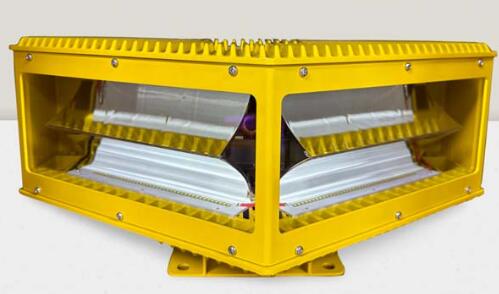The Silent Sentinels: How Chimney Aviation Warning Lights Safeguard Our Skies
In the vast, interconnected web of modern aviation, safety is the non-negotiable cornerstone upon which everything rests. While the public’s gaze is often drawn to the advanced technology inside cockpits or the grandeur of airports, a network of silent, steadfast sentinels operates 24/7, often unnoticed against the urban glow or the night sky. These are the chimney aviation warning lights, an indispensable component of aerial navigation that prevents disaster by marking obstacles and ensuring the seamless, safe flow of air traffic.
The primary function of chimney aviation warning lights is unequivocal: to make tall structures visible to pilots. Industrial chimneys, often soaring to heights that intersect with low-flying aircraft routes, present a significant collision risk. These structures, whether attached to power plants, manufacturing facilities, or refineries, are frequently located near airports or within established flight paths. Without proper illumination, they become nearly invisible shrouds of steel and concrete, especially at night, during twilight, or in conditions of reduced visibility like fog or heavy rain. Aviation warning lights transform these potential hazards into clearly defined points of reference, creating a visual language that pilots can instantly understand and navigate around.

The technology and application of these lights are far from arbitrary; they are governed by a rigorous framework of international and national regulations. Bodies such as the International Civil Aviation Organization (ICAO) and the Federal Aviation Administration (FAA) in the United States stipulate precise standards for the intensity, color, and placement of these systems. The requirements are typically tiered based on the chimney’s height and its proximity to airports. For structures exceeding a certain height, a specific lighting pattern is mandated. This often consists of red obstruction lights (L-864) arranged in clusters at the top and midway points, which are illuminated at all times. For even taller chimneys, or those deemed critical, high-intensity white strobe lights (L-865) might be required during daylight hours, switching to red beacons at night to avoid being overly dazzling to people on the ground.
The choice between red beacons and white strobes is a carefully calculated decision balancing aerial safety with community impact. Red LED lights, now the industry standard due to their longevity and energy efficiency, provide a constant, omnidirectional glow. They are highly effective for nighttime marking. White strobes, on the other hand, offer superior visibility over long distances in daylight. However, their intense, periodic flash can be a source of light pollution and annoyance for residents in surrounding areas. Modern systems are increasingly sophisticated, often featuring automatic photocells that seamlessly switch between daytime (white strobe) and nighttime (red beacon) operation, optimizing visibility while striving to be better neighbors to the communities they serve.
Beyond the basic function of illumination, the design and installation of a chimney aviation warning light system present unique engineering challenges. A chimney is not a passive structure; it is a dynamic environment subject to extreme conditions. The internal temperatures can be scorching, and the exterior is exposed to the full brunt of the elements—high winds, lightning, corrosive emissions, and vast temperature fluctuations. Therefore, the lighting systems must be incredibly robust. They are housed in specially engineered fixtures, often made from durable materials like polycarbonate and stainless steel, designed to withstand thermal expansion, vibration, and chemical exposure. Furthermore, ensuring a continuous power supply is critical. Systems are frequently equipped with redundant backup power, such as uninterruptible power supplies (UPS) or even integrated solar panels with battery storage, to guarantee they never go dark.
| chimney aviation warning lights |
Maintenance is another critical, though less visible, aspect of these safety systems. A non-functioning light is a potential catastrophe in waiting. Regulatory compliance mandates regular inspection and testing schedules. This often requires specialized technicians to perform hazardous work at great heights, using rappelling gear or crane systems to access the fixtures. Modern systems are addressing this challenge through smart technology. The latest generation of aviation warning lights can be equipped with monitoring modules that continuously check the status of each lamp. They can automatically detect a bulb failure, a power outage, or a drop in light intensity and immediately relay an alert to a central monitoring station. This shift from scheduled maintenance to predictive, condition-based upkeep ensures maximum reliability and minimizes the window of any potential failure.
The evolution of chimney aviation warning lights mirrors the broader technological advancements in aviation and lighting. The shift from incandescent bulbs to Light Emitting Diodes (LEDs) has been a game-changer. LEDs consume a fraction of the energy of their predecessors, generate minimal heat, and boast lifespans of tens of thousands of hours, drastically reducing maintenance frequency and costs. This reliability is paramount for a system that cannot afford to fail. Furthermore, the integration of these lights into broader Air Traffic Management (ATM) systems is on the horizon. As digitalization sweeps through aviation, it is conceivable that a chimney’s location and status could be part of a real-time digital twin of the airspace, providing an additional layer of data redundancy beyond the visual cue.
In conclusion, chimney aviation warning lights are a perfect exemplar of a critical, yet understated, safety technology. They represent a vital intersection of regulatory foresight, robust engineering, and evolving innovation. These unblinking red eyes and piercing white flashes are more than just lights; they are a covenant of safety, a promise etched in light that the path for aircraft will be clear of unmarked obstacles. They work tirelessly, without fanfare, ensuring that the immense complexity of global aviation retains its impeccable safety record. In the intricate dance of aircraft navigating our skies, these silent sentinels on our chimneys provide the essential, steady beat that keeps everything in safe and harmonious motion.
